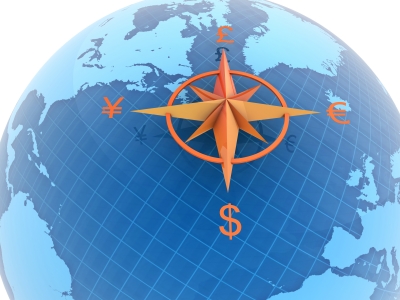What Every CEO Must Know: Secrets to Brand Growth in the U.S.

One hears over and over again that “all the growth is outside the U.S. now.”
Judging words by their operative meaning — the impacts on behavior that any words have, subtle though those effects may be — there is as always good and bad news. The good news is that this view leads to creative thinking about all those other countries where it is easier to grow. The bad news is that it leads to a giving-up on growth here in the U.S., which would be a deadly mistake. Any growing thing that stops paying attention to its core is in trouble.
Not just for the obvious reason, we stand on those foundations. Also for the slightly subtler reason that there is still growth to be had here in the U.S. We also need creative zero-base thinking here in the U.S. just as much as we need it globally. Otherwise we stand to leave a lot of money on the table — or more likely, on our competitor’s table, if one lets them be first to unearth the secrets of brand growth in the U.S.
There are leverage points one has in the U.S. that make it easier and may yield a higher probability of success. One virtue is that the U.S. is the world’s largest market for most U.S. brands today, although some are now passing the halfway mark outside the U.S. This is also a market in which each advertiser already has great data, lots of sometimes painful experience that has been learned from, deep cultural understanding for right creative thinking, and well-practiced ways of distribution and media. The trap is that with such long practice and sense of experience we find it hard to really be zero-based in our thinking about marketing, advertising, and media — even though a large percentage of our experience comes from before computers went into our pockets. When smartphones reached tipping penetration only two years ago, that was the quiet start of a new era in marketing, advertising, and media. At about the same time, social media reached a degree of quantitative and business maturity within advertising. The year 2011 may have marked the beginning of the revolution itself.
The revolution being in the general modality of existence. Even with computers not far away from the average person, great search engines, fast response, pretty colors — until we had all that in our pockets or handbags, we were still relatively naturalistic in our thinking and feeling from moment to moment. We were essentially the same breed of smart apes that we always were.
Now there has been a shift. With an extension of our body that is attached to us almost 24/7 like our other appendages, the smartphone has become the puppet master alien that inhabits our consciousness. If before we were ruled by our gametes seeking to use us to give birth to other gametes, that master is sharing control with the one in our hand. I say the latter jocularly in that consciousness is the master and in Flow state this comes true.
We are no longer acting naturalistically. The phase from branch-to-branch brachiating up until 2011 was one phase, this is another. This new phase is a soft form — like an unwired network — of cyborgism. We have become in a sense half human, half machine.
This is not the only change occurring simultaneously with the rest of this shift. The cold thinking of the Enlightenment, which gradually distanced us further and further from feelings, that pendulum has swung back much faster than the outswing went. We are letting our feelings show to one another, more like in a Latin culture. Cinema and television have contributed to this, and the Internet has added a gritty truth-insistence streak. The person (formerly known as consumer) has laid down the law to the brand, “get naked, take off that mask.”
With all these changes, a CEO or brand manager would be crazy to leach off too much of his/her own creativity to lands abroad to the detriment of zero-based reinvention of self in the U.S. This zero-base is top priority in the home country first, where there is the biggest upside and the biggest downside.
What are the secrets of brand growth in the U.S.? The real question is worth testing and might work, and then be remembered as one of the secrets of what caused brand growth in the U.S. to resume at a higher level than the current poor showing. We may find that 5%-10% growth is sustainable even with zero population growth in the U.S., given how many people will be moving upward from below the poverty line. Think of the potential of being a brand that levels with the underprivileged, lends a helping hand, engages in cause support, training programs, work/study programs, and employment policies that, stripped naked on mean-streaked blogs, still earn respect and gratitude. When those people grow out of poverty they will have deep loyalties to a brand that keeps their trust.
This might turn out to be one of the secrets — i.e. something most of us don’t know now, but could find out, and then profit from. Call this one “Reach Down.” Grow the brand by helping people who can’t afford it. It might also be tested in other countries. Help them how? As just described, cause support, work/study programs, employment/training practices, and so on. The helping hand might be any means of economic benefit — it need not simply be discounts, although that is the most obvious possibility. However, let’s discuss alternative ways of giving people economic benefits rather than price cutting.
We recommend that brands ideate scenarios with their agencies and teams on the “Reach Down” hypothesis, and then do in-market A/B test of the design execution. If results are positive, refine and test again, or roll out, depending on the findings.
In the next post we will continue to explore the potential secrets to brand growth in the U.S., analyzing our own ideas such as:
- Test a Cure for the Promotion Addiction
- Test Bold New Media Mixes
- Test Vast Scale-up in Owned Media
- Test Whether Science Can Lift Success Rate of Creative
Looking forward to your feedback.
Bill Harvey is a well-known media researcher and inventor who co-founded TRA, Inc. and is its Strategic Advisor. His nonprofit Human Effectiveness Institute runs his weekly blog on consciousness optimization. Bill can be contacted at bill@billharveyconsulting.com
Strategic Advisor. His nonprofit Human Effectiveness Institute runs his weekly blog on consciousness optimization. Bill can be contacted at bill@billharveyconsulting.com
Read all Bill’s MediaBizBloggers commentaries at In Terms of ROI.
Check us out on Facebook at MediaBizBloggers.com
Follow our Twitter updates @MediaBizBlogger
The opinions and points of view expressed in this commentary are exclusively the views of the author and do not necessarily represent the views of MediaBizBloggers.com management or associated bloggers. MediaBizBloggers is an open thought leadership platform and readers may share their comments and opinions in response to all commentaries.
[Image courtesy of David Castillo Dominici/FreeDigitalPhotos.net]


